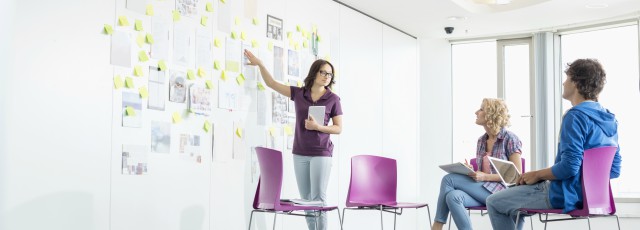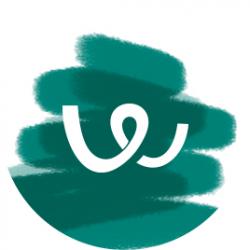6 real-life design engineer interview questions and answers
A Design Engineer is a professional who combines creative design with technical knowledge to develop new products or improve existing ones. This role often involves a blend of mechanical, electrical, and computer engineering skills, and demands a strong understanding of manufacturing processes, materials, and design principles.
These design engineer interview questions are directly sourced from real hiring managers and they are ready to use.

Make sure that you are interviewing the best design engineer candidates. Sign up for Workable’s 15-day free trial to hire better, faster.
6 good design engineer interview questions
- Can you elaborate on one of the technical projects you’ve listed on your resume? Share details about the design process, challenges faced, and the technical knowledge you applied.
- In your experience, what are some critical design considerations for various manufacturing processes? How do these considerations differ for additive manufacturing versus traditional machining methods?
- Could you provide an example of a project where you had to estimate the cost of a part’s production? What factors did you take into account, and how did you arrive at the cost estimate?
- Describe a situation where you applied principles of statics in a design project. What were the key calculations or analyses involved, and how did they impact your design decisions?
- Have you worked on projects related to fluid dynamics? Please share an example and discuss the specific challenges you encountered and how you addressed them.
- When it comes to technical tests for Design Engineers, what fundamental mechanical engineering concepts or calculations would you expect candidates to be proficient in?
Here are 6 real-life interview questions with sample answers, based on hiring managers’ notes, to help you identify the best candidates for this role.
1. Can you elaborate on one of the technical projects you’ve listed on your resume? Share details about the design process, challenges faced, and the technical knowledge you applied.
This question assesses the candidate’s practical experience and problem-solving skills. It provides insight into how they approach a project from conception to completion.
Sample answer:
“In my previous role, I worked on designing a compact, high-efficiency motor. The project began with conceptual design, followed by iterative prototyping. One major challenge was balancing size constraints with performance requirements. I applied my knowledge in electromechanical systems and used CAD tools for design optimization. Finite element analysis was crucial in predicting the performance under different loads.”
2. In your experience, what are some critical design considerations for various manufacturing processes? How do these considerations differ for additive manufacturing versus traditional machining methods?
This question evaluates the candidate’s understanding of different manufacturing methods and their design implications.
Sample answer
“Design considerations vary significantly between additive manufacturing and traditional machining. For additive manufacturing, one must consider layer adhesion, support structures, and material properties. In contrast, traditional machining demands attention to tool access, tolerances, and material removal rates. I prioritize manufacturability and cost-effectiveness, balancing these with the functional requirements of the part.”
3. Could you provide an example of a project where you had to estimate the cost of a part’s production? What factors did you take into account, and how did you arrive at the cost estimate?
This question tests the candidate’s ability to integrate cost considerations into the design process.
Sample answer
“For a custom gear project, I considered material costs, machining time, tool wear, and labor. I used historical data and supplier quotes for material pricing, and calculated machining time based on the complexity of the part and the capabilities of our equipment. The estimate also included a margin for unexpected challenges, ensuring a realistic and comprehensive cost projection.”
4. Describe a situation where you applied principles of statics in a design project. What were the key calculations or analyses involved, and how did they impact your design decisions?
This question probes the candidate’s foundational engineering knowledge and its practical application.
Sample answer:
“In designing a load-bearing frame for an industrial machine, I applied statics to ensure structural integrity under load. I calculated the forces and moments at various points, considering weight distribution and potential dynamic loads. This analysis influenced material selection and the cross-sectional dimensions of the frame components to ensure safety and durability.”
5. Have you worked on projects related to fluid dynamics? Please share an example and discuss the specific challenges you encountered and how you addressed them.
This question delves into the candidate’s experience with fluid dynamics, a key aspect in many engineering designs.
Sample answer:
“I worked on optimizing the fluid flow in a heat exchanger. The challenge was to maximize heat transfer while minimizing pressure drop. Using computational fluid dynamics (CFD) software, I simulated various configurations and adjusted the design accordingly. This led to a 15% improvement in efficiency.”
6. When it comes to technical tests for Design Engineers, what fundamental mechanical engineering concepts or calculations would you expect candidates to be proficient in?
This question assesses the candidate’s understanding of the essential mechanical engineering concepts relevant to their role.
Sample answer:
“Candidates should be proficient in dynamics, strength of materials, thermodynamics, and fluid mechanics. They should be able to perform basic calculations like stress and strain analysis, heat transfer calculations, and fluid flow analysis. Familiarity with simulation software and CAD tools is also crucial.”
What does a good Design Engineer candidate look like?
A good Design Engineer candidate exhibits a strong foundation in engineering principles, creativity in design, and practical problem-solving skills. They should demonstrate proficiency in CAD software, an understanding of different manufacturing processes, and the ability to integrate cost and functionality in their designs. Effective communication skills and the ability to work collaboratively in a team are also vital traits.
Red flags
Red flags in a Design Engineer candidate include a lack of practical experience or over-reliance on theoretical knowledge. A candidate who struggles to provide specific examples of past projects or cannot articulate the reasoning behind their design decisions may lack depth in their understanding. Additionally, an inability to discuss challenges and how they were overcome may indicate poor problem-solving skills or a lack of hands-on experience.
